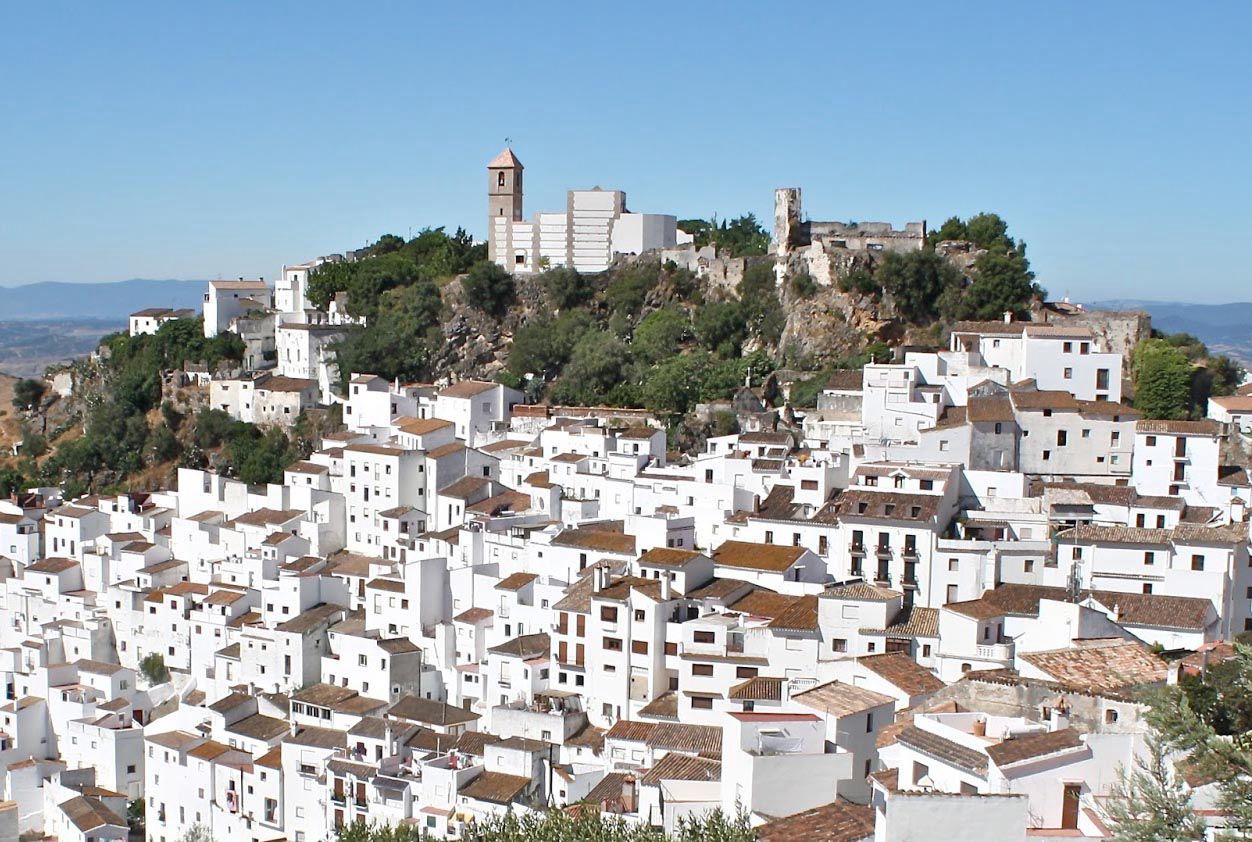

Audio 0. Introduction
To visit Casares with the audioguide is to fill ourselves with the essence of Andalusia in its purest form. This city has the privilege of being the birthplace of Blas Infante, better known as father of the Andalusian homeland. The city center, declared an historic-artistic site since 1978, immerses us in a web of white streets of Moorish design, where we can delight ourselves in its truly unique corners.
The Arab Castle, crowning the village, provides us with a wonderful panorama of the countryside, with views of the sea and mountains. From there, one can see Sierra Crestellina, the Mountain of the Duque, Sierra Bermeja (named for the reddish color of its peridotite rock, and which possesses the endemic species of Pinsapo, or “Spanish Fir”. Also close by, a natural area on the first order containing truly spectacular karst formations: the Sierra de la Utrera. In all of these, one can go on beautiful hiking routes, and, from their vantage points, witess the flight of vultures, who have their colony in the Sierra Crestellina. Also in the Sierra de la Utrera are the Arab baths of Hedionda, with sulphurous water. More information on the baths can be found in Audio 13 of this audioguide.
If we would rather delight ourselves with a day at the beach, there is nothing better than enjoying the Mediterranean coast of Casares, providing all the services which one could need, and which is located only 14 kilometers from town.
We encourage you to listen to Audio 14 of this Audioguide, where one can become familiar with the typical cuisine of Casares, and to Audio 15, detailing its festivals and traditions.
Audio 1. Medieval Arch of Villa Street
An elbow-shaped arch that leads into the Arab fortress. This gate was used by the king and lords of the castle, who rode through this street mounted on horses.
When they are shut, the Gates of the Arrabal and Villa arches make the fortress impenetrable. This is due to the fact that, on the other side of the fortress, there is a great precipice from which you can see the coast of Malaga, the Strait of Gibraltar and the African coast.
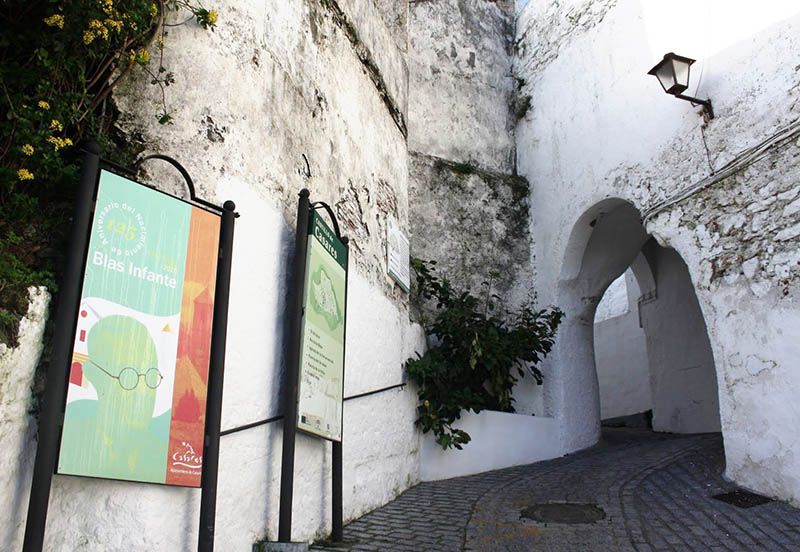
Audio 2. Medieval Arch of Arrabal Street
An arch which gives entrance as a doorway to the Arab fortress. You will find it with the audioguide in Arrabal Street. It was used by traders, merchants and peasants, who gained protection inside the fortress on behalf of the King. It was used by the people of the Arrabal, or "the outskirts", hence the name of the arch and the street. These people usually went by foot as they traveled up to the fortress. Access is less elaborate than that the arch of Villa Street, the latter being for the king and other noted personalities.
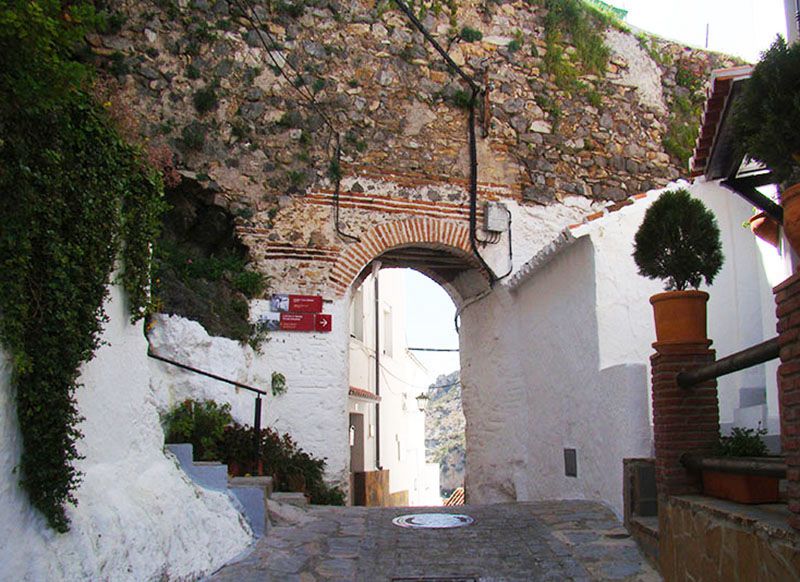
Audio 3. Crafts Center and Lookout Point
Just as one enters the Arch of Villa Street, one finds a gallery dedicated to a craft center, with numerous articles of cork and leather, all made in the town. We can also view and purchase articles made in the surrounding areas, such as lamps, decorations, puppets and costume jewelry (all made by hand).
To gain access to the lookout with the audioguide, we need only leave the craft center and turn right. The viewpoint is immediately above where we were. From there, we can admire a privileged view of the town and take pictures. The viewpoint has public washroom facilities.
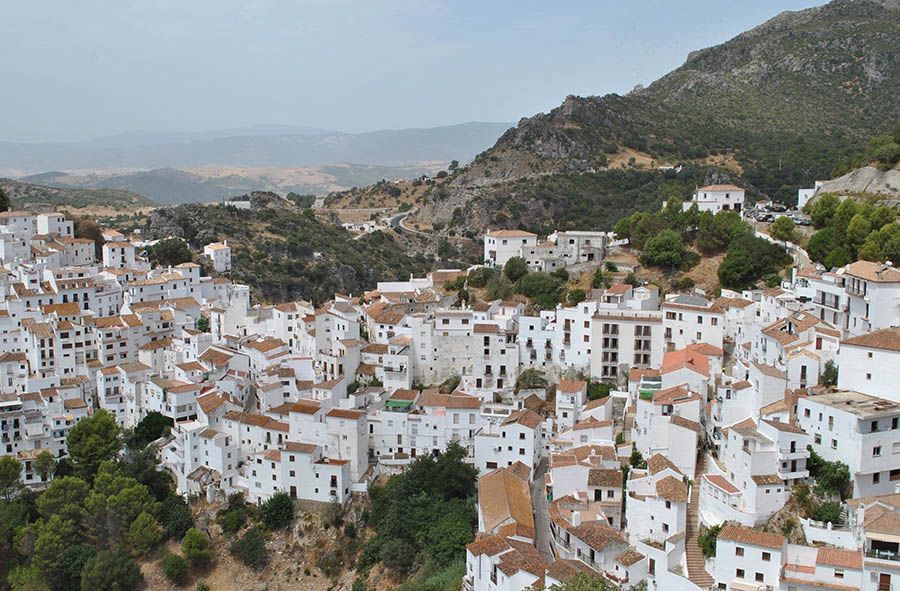
Audio 4. Blas Infante Cultural Center
Located in the historic “Iglesia de la Encarnación” (Church of the Incarnation), is a building of the Sixteenth Century, thanks to a Papal bull of Pope Julio II. This building stands on the foundations of an ancient mosque, which belonged to an Arab fortress of the Thirteenth Century.
In the 1940’s, this church was in a ruinous state. The conversion of the building to a cultural center began with the transfer of the church to the City of Casares by the Diocese of Málaga in 1988. Ten years later, the recovery project was drawn up, and, in 2005, work began on the restoration, which lasted a further five years.
Thanks to this important restoration work, the goal of recovery was achieved. The cultural center was finally opened in July of 2010, coinciding with the 125th anniversary of the birth of Blas Infante, from whom the center gets its name.
In addition to preserving the tower of an undeniably Moorish origin, there are three naves, separated by semi-circular arches, supported by pillars. The domes and ceilings have been reconstructed. The two aisles are used as exhibition areas, and the central nave as a theatre hall, in which a stage has been installed.
The Cultural Center houses an ethnographic museum, featuring utensils of everyday life-- both pubic and deomestic--ranging from the Neolithic era to the modern day. There is also an archeology and history room containing remains found in the Casares region, which testify to its Iberian-Phoenecian -Roman past. There is also a description of the places settled by these civilizations. One can take a guided tour to get further information than the one this audioguide offers.
With the significant value of this building, the City Council has given the village of Casares a privileged cultural identify for a number of reasons; its location, its heritage of more than eight centuries of existence, as well as its modern facilities that open a wide range of cultural possibilities: exhibitions, conferences, as well as musical and theatre productions.
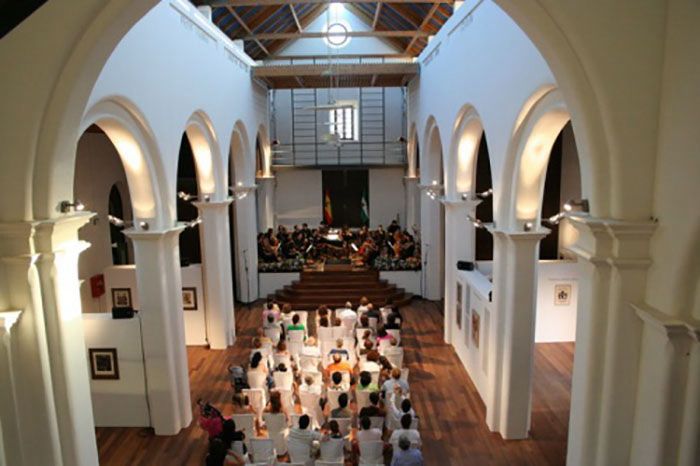
Audio 5. Ruins of the castle and the fortress
Casares Castle rises above the village on an abrupt mass of limestone rock. From its location, it is master over the valleys, hills and coastal plains that extend from the mountainous area of Rhonda to Algeciras Bay. The castle has line-of-sight with Jimena, Castellar and Gibraltar. It served as a communications link between the coastal inlets of Manilva and Estepona, as well as the fortresses, towers and villages of the interior, as well as with the city of Ronda.
Casares Castles was declared a site of Cultural Interest in 1985. The ruins of the fortress, as well as the results of various excavations conducted at the site, are not able to bring us information on settlements previous to the Middle Ages. Thus, the first references to the fortress are from Arab sources of the Thirteenth Century. Casares acquired great importance because of its being one of the fortresses located between the coastal strait and the mountainous area of Ronda.
The walled enclosure is an irregular polygon with a number of entrances and exits, the located of which resulted from topographic constraints. The wall, especially on the south, west and north sides, follows the edge of a deep ravine known as "La Planá".
The view allows us to distinguish three mountain ranges, one after the other: The Sierra Crestellina, named for its peaked ridges. Then, Monte del Duque, a landscape rich in vegetation and wild animal species, such as the Ibex and the wild boar. And, next to the other side is the Sierra Bermeja, named after the red color of its peridotite rock, and which provides a home for an endemic special of tree, the pinsapo, or “Spanish Pine”.
If we look towards the coast from the precipice of the castle with the audioguide, we can see the Sierra de la Utrera with its karst landscape, within which are located the Arab baths of Hedionda, containing sulphurous water. In Audio 13 of this audioguide, you will find further information on the Arab baths. From the castle, you can see the Genal River passing through the village, with many cirtus crops along its borders.
One can also spot Griffon Vultures in flight. These birds have their nesting colony in the Sierra Crestellina.
The castle is one of the most beautiful and picturesque parts of the town. To visit it is a must. Aside from the remains of the wall of the castle, parts of the walls and towers of Alcázar, at the highest part of the plateau, are also preserved. With respect to entrance doors, the only access door to the fortress is located along its side, and is known as the Arco de la Villa. It leads into a square tower, forming an angled passage. A second door opens into the north corner of the wall—this door leading to the outskirts of the castle, and is known as the Arco de Arrabal.
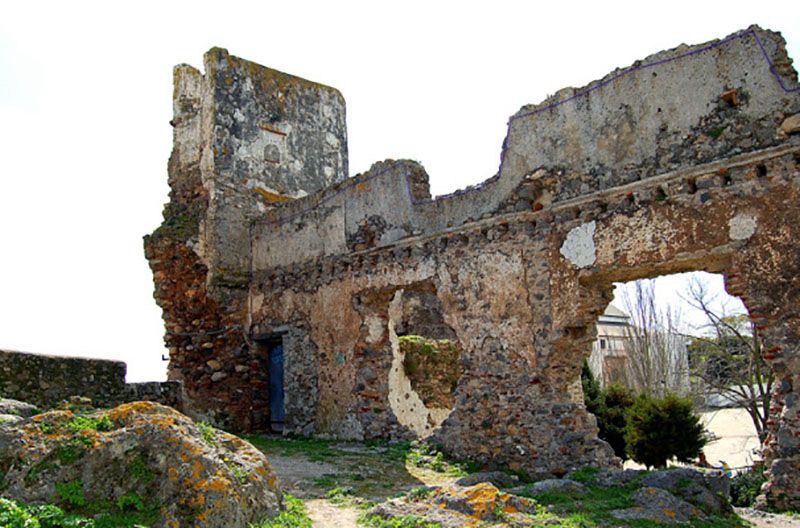
Audio 6. Hermitage of Vera Cruz
This chapel you can see now with the audioguide is located within the castle grounds next to the ruins of the Alcazar. Its construction dates to the Sixteenth Century. The original location is known, but today only a part of the nave exists.
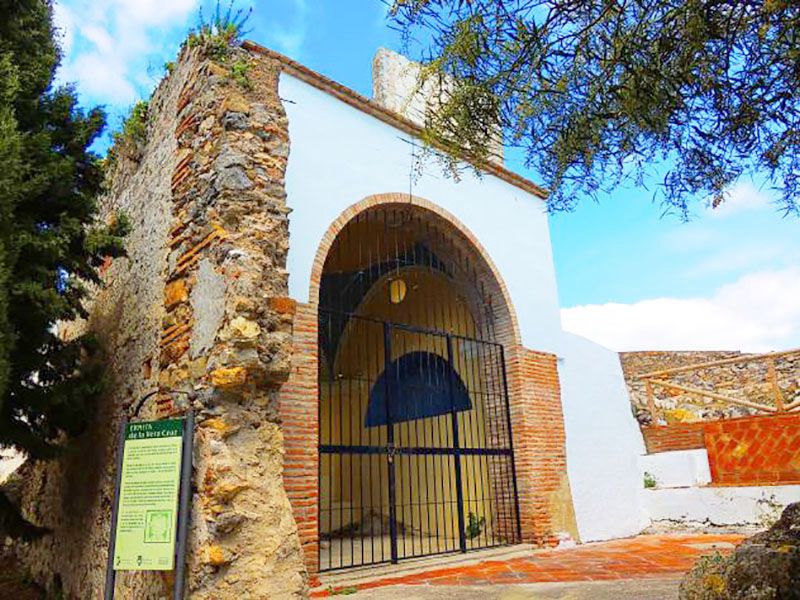
Audio 7. Cemetery
Located within the castle grounds is a singular element, due to its circular design (made so because of the topography) as well as the Casaran custom of whitewashing the niches. Such features have made this place a showpiece of our culture and popular customs. Its location gives it an important scenic interest, in that it has been cut to round-off the compound’s enclosure on the south. It is surrounded by various walls of mixed materials. Along the slopes, there are neglected sections—often whitened--due to the difficulty of accessiblity with the audioguide. The main entrance is very discrete—an open point archway in the fence, with a niche above. It contains one of the most interesting sets of “trasdosadas vaults” in the region. This is a type of vault where the curve of the outer surface is equal to that of the inner curve. In other words, they are parallel. There is no known historical data. At City Hall, there is only information on the repairs of 1901. The oldest tombstone, now fractured and replaced, is from 1851. The city council hopes to preserve the composition and order of the cemetery. Nevertheless, there are examples of the incorporation of different types of modes and materials.
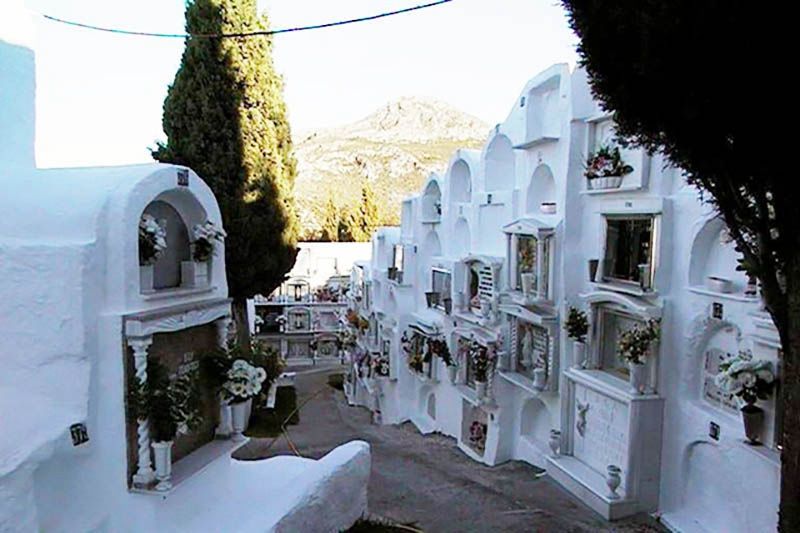
Audio 8. Birthplace of Blas Infante
At 51 Calle Carrera, we find the house in which Blas Infante, Father of the Andalusian Homeland, was born, on July 5, 1885. Today, aside from its being a tourist information location, the building houses a permanent exhibition, with fragments of the life and works of this illustrious casareño. These help us to gain a better understanding of his thought and personality.
It is a small village house whose entrance serves as a reception area. We pass from there to the first room, dedicated to the most recent history of Andalucía, its values, identity and culture.
The storage area under the stairway that goes to the second floor contains common objects to the inhabitants of Andalucía.
In the second room, with the audioguide you’ll see a number of elements of the original house, such as the old coal stove as well as a magnificent collection of paintings by Andalusian artists. You can also view the birth certificate of Blas Infante.
In the Third Room, we find an exhibition on the life and work of Blas Infante. We can also watch the documentary "Casares, following in the footsteps of Blas Infante", or listen to this section of the audioguide.
On July 5, 1885 at Calle Carrera No. 46 (now No. 51), Blas Infante was born. He was the son of Luis Infante Andrades and Ginesa Pérez Romo, a family of wealthy farmers who lived in the área. Blas Infante spent his childhood in the village and was sent to school at the age of 11. You can see how the Andalusian day laborers lived in misery during this time. From ages 12 to 14, Blas Infante studied at the College of Archidona Pious Schools, and later completed his baccalaureate in Malaga.
When he returned to Casares, he interrupted his studies, and instead, worked in the Municipal court as a clerk with his father, who was clerk of the court.
In 1904, thanks to the sacrifice of his parents who paid the tuition, he enrolled at the University of Granada to study law, and finished the race two years later with the notes “outstanding” and “remarkable.”
Then, he decided to prepare opposition cases to the notary while at home in Casares. He was approved to do so in 1909. However, Blas Infante had to wait until he was twenty-five in order to practice as an attorney in the town of Cantillana in Seville. In all of this time, between studying law and preparing the opposition cases to the notary, he continually helped the poor of Casares with any documentation, or teaching them to read and write.
Infante settled in Seville and begans to have contact with members of Andalusian culture. It was at this time that he wrote his first and most important book, "The Ideal Andaluz", where all of his thoughts on the problems of Andalusia were collected, and how these would be resolved. He also founded “Centros Audaluces”, meeting centers scattered around Andalusia (and beyond) in order guide the Andalusians on his ideas.
Ronda is a place of importance place for Blas Infante. It was there that the first Hispanic American Congress was held, where he criticized the situation in Andalusia. In 1908, Blas Infante returned to Ronda as president of the Regionalist Andalusian Assembly. He debated on the laws and future of Andalusia. In this congress, Blas Infante presented the white and green flag, the shield with Hercules with two columns and two lions, and the anthem. All of them were approved as the oficial symbols of Andalusia. In this congress the first statutes for Andalusia were put forth. These were later used to draft the modern day Statutes of Andalusia.
In 1919, he married Angustias Garcia Farias in the town of Peñaflor, in the house of her family. They had four children (three girls and a boy).
During the years of the dictatorship of Primo de Rivera, due to the strong repression, Blas Infante went into a more subdued existence, moving his practise to the town of Isla Cristina (Huelva). There, he lived quietly, continuing his law practise as well as writing books on flamenco and nature.
After these years of relative silence, Blas Infante returned with much more intensity. He wrote the Final Manifesto to all Andalusians, a call to all Andalusians for autonomy.
In 1931, he returned to Seville, setting up his law practise in the town of Coria. It was here that Blas Infante was was arrested on August 2, 1936, just at the beginning of the Civil War in Spain. The Falangists, who were occupying Seville, arrested and imprisoned him. Many friends try to get his release, but it proved to be impossible.
At dawn on August 11, together with other prisoners, Blas Infante was led to the road of Carmona. At Km. 4, an anonymous hand shot and killed the illustrious Casareño, Blas Infante, father of the Andalusian homeland.
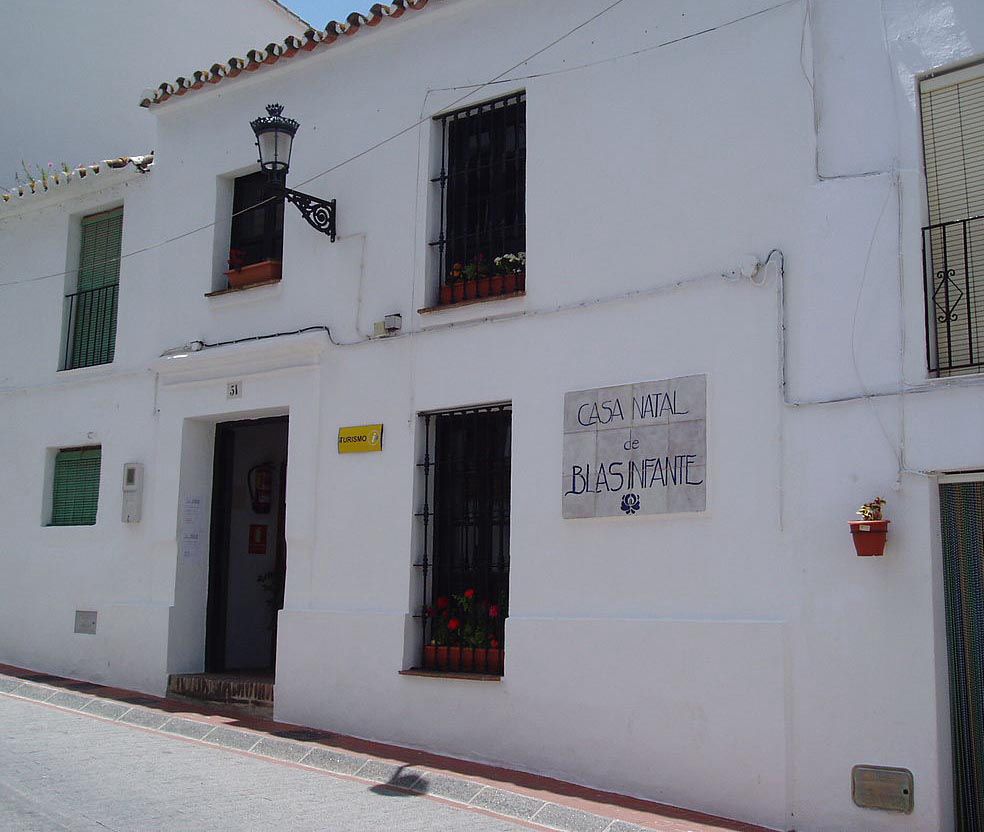
Audio 9. Plaza de España
The tour continues with the audioguide at the main town square. Here, we find the monument to Blas Infante, the church of San Sebastian, and the fountain of Carlos III.
The fountain, a construction of the hydraulic renovations of the eighteenth century, was completed in 1785, under the reign of Carlos III. In the late 18th and early 19 Centuries, Casares underwent a number of improvements in its municipal water network.
The fountain is of a Neoclassical style and consists of three bodies. From its ceramic interior bowl, water is destributed to four channels, where four taps provide the output to four pools of the same material. When the fountain was first built, there was no drinking water in the village houses. For that reason, the typical image of women and children filling jugs of water from the pipes lasted well into the 50s and 60. According to popular legend, an unmarried man or woman from out of town who drank water from the fountain would come to remain and live in Casares, because he or she would find his or her mate here.
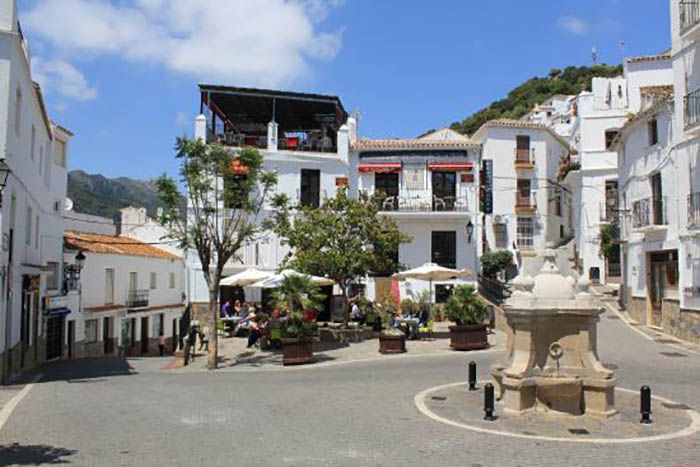
Audio 10. Monument to Blas Infante
This monument you can visit with the audioguide pays tribute to our most illustrious neighbor, the father of the Andalusian homeland. At this site, a floral wreath is presented every February 28, the Day of Andalusia, by politicians and various associations.
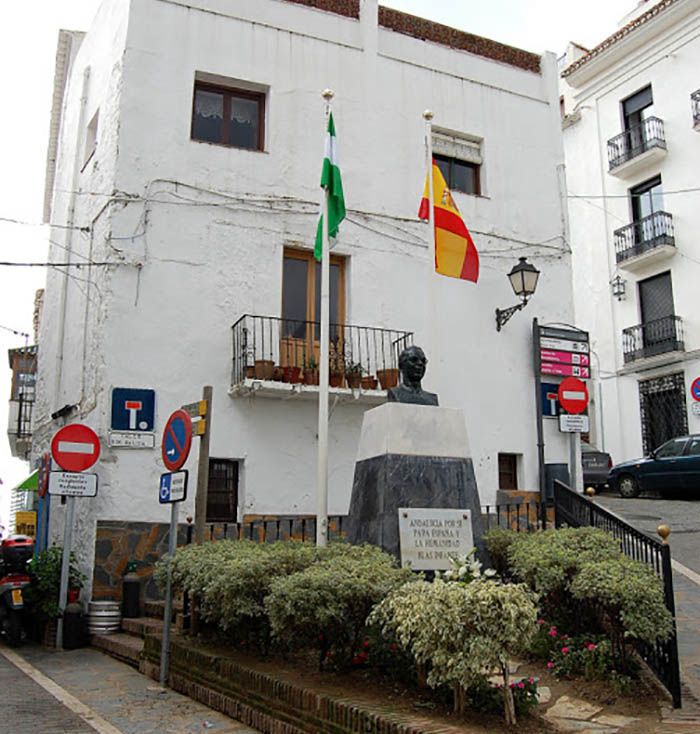
Audio 11. Church of San Sebastián
Next section of the audioguide, this small chapel of the 17th Century is located in the Plaza of Spain. A basilica with one nave, it is home of the image of Our Lady of Rosario del Campo, the patroness of Casares.
The original sculpture, partly destroyed in the civil war, was of a dark mahogany-colored wood. The arms, as well as the child, were carved in the same piece of wood. The sculpture was possibly uncovered between the 11th and 12th centuries. Each May, the image is transferred to the chapel near the junction of the Genal and Guadiaro Rivers, in order to celebrate its pilgrimage.
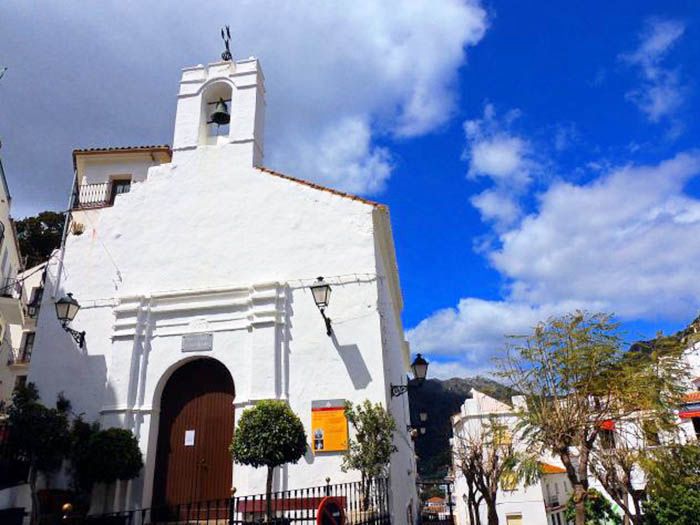
Audio 12. Church of the Convent of the Incarnation
Originating as a Capuchin Franciscan convent, this church is located in the Plaza de la Fuente del Llano. It contains a single nave. In its facade, we see with the audioguide three brick arches. The tower, of Moorish origin, was built in the 16th Century, is square in shape, with two sections added later on. Another attraction of the church is the area out back, which belonged to the old convent. Here, you’ll find a garden surrounded by small fountains and landscaping.
Near the entrance of the church, in Calle Fuente, is the Arch of Llano. This was the entrance to the 16th Century Franciscan Capuchin Convent, and today is the only element that remains of the perimeter that surrounded the convent.
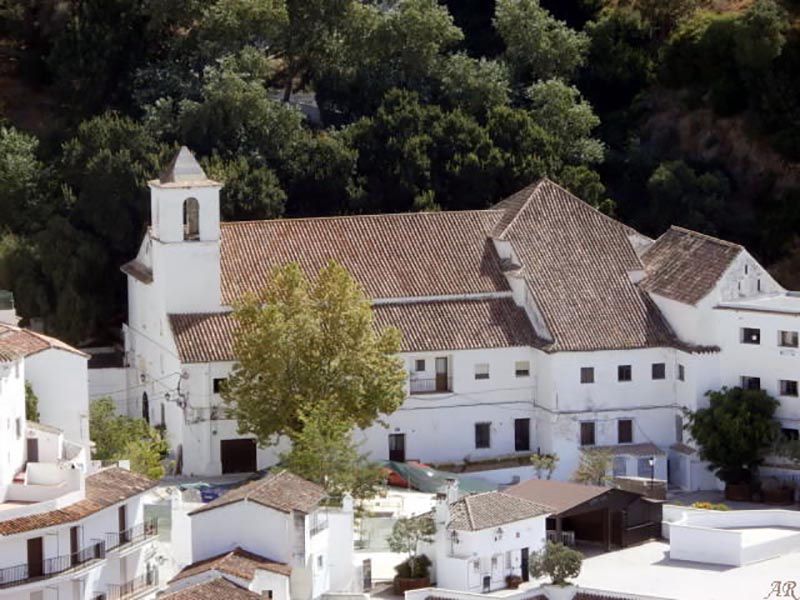
Audio 13. The Baths of Hedionda
In the Sierra de la Utrera, we find with the audioguide the Baths of Hedionda, baths of sulphurous water. According to tradition, Roman emperor Julius Caesar ordered the baths to be built. This was his expression of gratitude for the healing of a skin disease that he suffered. The baths are of Roman origin, with Arab (Caliphate) remodeling. They consist of a square spa enclosure, approximately six meters wide, with spherical dome scallops, and two barrel vaults, all under water. Later remodelings, the result of different levels of the spring water, caused the Arabs to fine-tune and expand the structure with walls and pipes to bring in light.
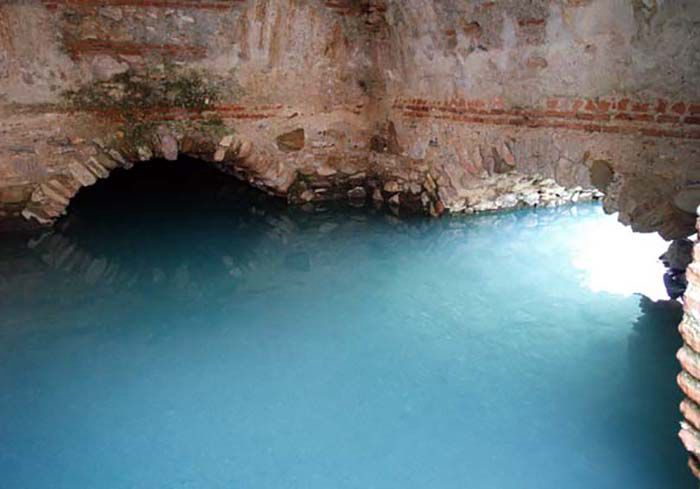
Audio 14. Cuisene
The cuisine is another reason to visit Casares and further get to know its background. One can savor the dish of oyster thistles with dip, hot soup or gazpacho Casareño, and goat sausage with tomato. All of this accompanied by bread baked over a local firewood, and, like the goat cheese, made in the area. All these dishes can be sampled in the numerous bars and restaurants of the village.
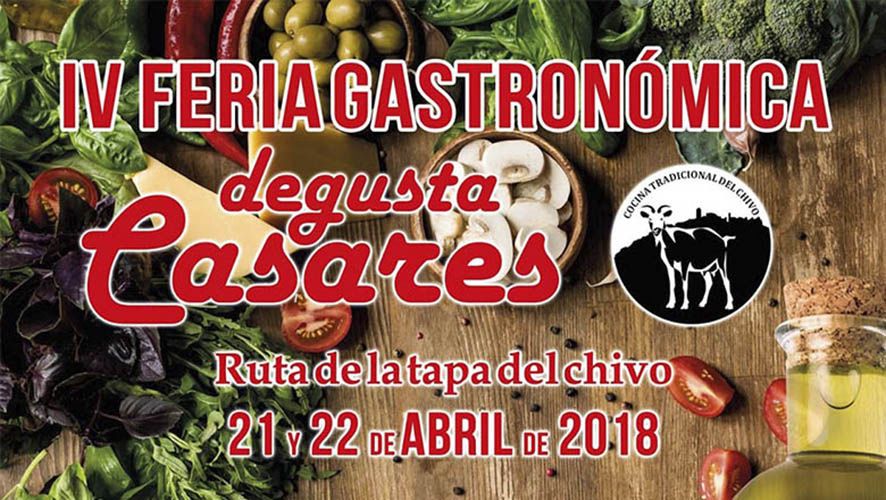
Audio 15. Festivities
And if you wish to return to Casares, it will be important to consult this section of the audioguide with the festival-filled calendar in order to better know our people, our culture, and to experience the unforgetable.
The calendar begins on the Day of Andalucía, the 28th of February.
The first weekend of March is Carnaval, followed by “Semana Santa,” or “Holy Week. “
The last weekend of April is “jornadas gastronómicas,” or “journeys of the cuisene,” where one can savor snacks and elaborate dishes, such as goat sausage, all from the meat of the payoya goat.
The final weekend of May is the Pilgrimage of the Virgin of Rosario, where residents travel to the Genal River with the sculpture of this virgin.
The 23rd of June is the Night of San Juan, at Casares Beach.
On July 5th, they celebrate the Blas Infante Casares Solidarity Awards. Prizes are awarded to non-governmental organizations of Andalucía, to NGO’s of a national level, and to NGO’s that work in various parts of the world.
The first weekend of July is the Stage Arts Festival, where the strees of Casares are converted into stages.
In the middle of July, it’s the Fair of Secadero, a municipal district of Casares, captivating for its being a very small and cozy fair.
At the end of July, the Music Festival of Espileta, giving an opportunity for new groups to promote their music.
The first weekend of August is the major festival of the Casares residents: The Fair. With bands playing on the main streets, it is a very enjoyable and informal fair.
September arrives. The first weekend contains the Day of the Patroness, the Virgen of Rosario, with her procession and festival.
On the second weekend of September, residents celebrate the fair that marks the end of the harvest.
In October, the New Andaluz Cinema Festival, an event of vital and emphatic identity, featuring various competitions, feature films, shorts, photography, documentaries, workshops, and so on.
The last days of October and the beginning of November, we can not forget chestnut croutons and Halloween.
On the Friday in December that comes before the 24th, the Living Nativity takes place on the streets of the town. Residents take part in the Living Nativity, as well as in other unique and diverse activities celebrating the Christmas Season.
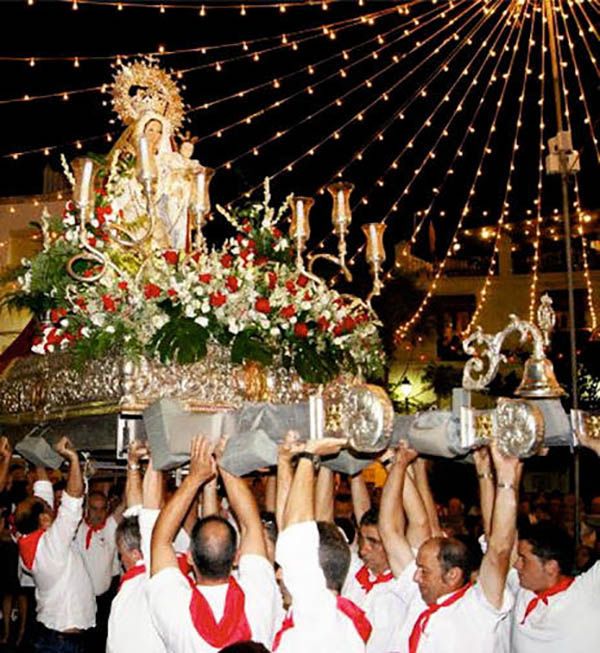
Oficina de turismo de Casares: Calle Carrera, 51, Casares, 29690, Malaga
- Tel.: +34 952 89 40 17 - www.casares.es -
Back to Index